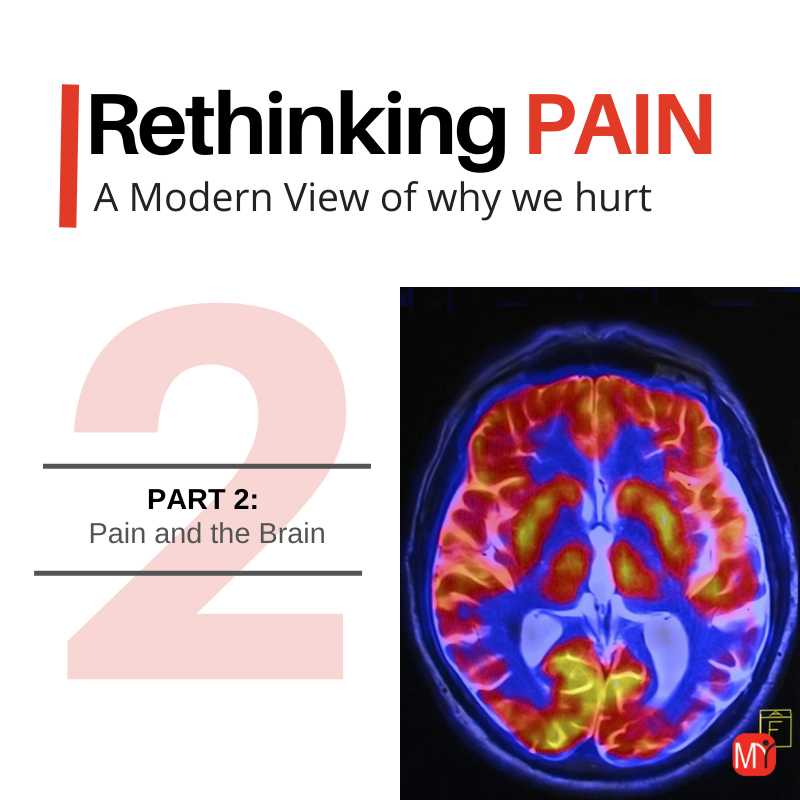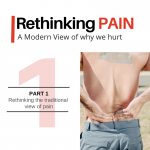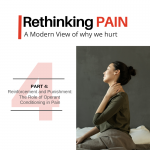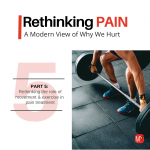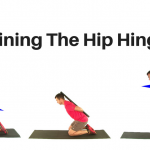Part 2: Pain and the Brain
So we’ve been talking about Pain. More specifically, we’ve been trying to understand what causes pain? The hope here being a better understanding of pain will lead to more effective treatments. In Part 1 of this article series we discussed the shortcomings of traditional approaches to musculoskeletal care. There we left off with a problem that went something like this…
Clinicians and therapists often direct their treatment towards improving “faulty” movement patterns believed to be the source of pain. This will typically involve manual therapy or exercise prescription aimed at improving ROM or strengthening weak/inhibited muscles that are driving the compensatory movements.
Despite there being little to support the connection between faulty movement patterns and pain (again.. see Part 1), clinical studies consistently report improvements in pain and function following these interventions. But, (and here’s where things get really interesting), improvements in pain are not accompanied by changes in the movement patterns.
So what mechanisms are driving the improvements? If movement doesn’t change how are these interventions influencing pain? This of course is a critical question. The more we understand how our treatments work the better we can refine and utilized these interventions in patient care.
This really comes back to understanding the nature of pain itself. It is here we have made big strides in recent decades. We now know what we feel, including pain, is ultimately a function of your central nervous system CNS). So to understand the modern view of pain we need to understand a little bit about how how the CNS works.
Pain and the Brain – CNS Processing
In the most basic sense, information regarding the state of the body is passed via the peripheral nerves up to higher brain centers. This flow of information allows the brain to continually monitor and regulate key biological and physiological processes necessary to sustain life and to successfully interact with the physical world around us.
The concept here sounds simple enough. But the actual mechanisms through which this occurs involves exceedingly complicated processes that we are just beginning to understand. We will save the mechanistic details for another time. For now just realize that incoming sensory information is really just raw bits of data passed on to the CNS. For these signals to have any meaningful effect or significance your brain must interpret and process this raw data to formulate an accurate picture of your current body state.
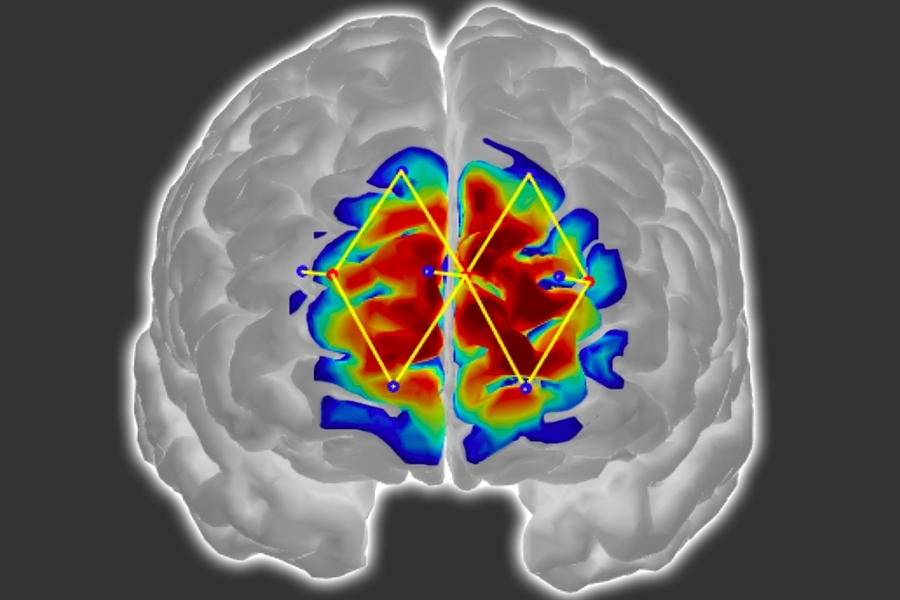
Your brain is like a computer… sort of…
In one sense this is similar to a computer. As your fingers move across the keyboard, raw data in the form of numerical strings of 1’s and 0’s are relayed to the CPU. Your brain then performs complex information processing functions in an effort to create meaning from these incoming neuro-chemical signals.
But unlike computers with a primary CPU, your brain processes information simultaneously through a vast array of parallel networks, each made up of millions of cells wired together and widely distributed throughout the brain.
This modern view of information processing through parallel brain networks has significantly changed our understanding of pain. We now know that pain is not just a straightforward 1:1 encoding of sensory information. There is no single specific molecule, receptor type, or brain center responsible for pain.
The feeling of pain does not simply occur as a reflexive response to tissue injury or damage (this is why the patho-anatomical model and KPM have trouble accounting for pain).
Brain Decides When Pain is Appropriate
In fact, we now know pain is not a sensory input at all. Instead, modern science tells us pain should be viewed more as a perceptual output. As an experience that your brain generates when it decides pain would be helpful given your current environment or situation.
On the surface this may seem hard to grasp. After all, in what way is the acute low back pain your experience after bending forward to tie your shoes beneficial? How does waking up with a painful neck help in accomplishing the pending tasks of the day?
Modern science views pain as an output… it occurs when you brain decides pain would be helpful given your current environment or situation
Pain – An Evolutionary Perspective
If we want to understand the experience of pain in our modern world it is necessary to know how the body and its various systems were formed in more ancient environments. The fact is everything about our basic anatomy and physiology (including our “pain system”) is the way it is now because somewhere along the line natural selection found favor in certain genes over others. It was these helpful genes that allowed our species to survive long enough to pass this genetic information on to subsequent generations.
So in our modern world we may see pain as an unpleasant feeling that we just want to go away. But when viewed through an evolutionary lens we can more readily recognize the importance of pain in the survival of our species.
Pain Is Meant To Protect Us
In our modern world of antibiotics, specialized medicine, and well staffed emergency departments we don’t worry too much about injuries and infections being the end of us. Cuts, burns, and breaks may happen, but life goes on. But this was not necessarily the case for your ancient ancestors. Physical ailments and afflictions that serve as an inconvenience to modern man could have disastrous consequences in a hunter-gatherer world. So natural selection was tasked with developing a mechanism to protect our developing species from physical harm. To protect our tissues from injury.
Pain is a critical part of that system.
That sudden searing pain your ancient ancestor felt when reaching his hand into the fire protected his flesh from a serious burn. Likewise, the pain felt after twisting an ankle while out foraging for food also plays an important protective role. In this case to protect the ankle from further injury and help promote healing and recovery.
Pain Changes Behavior
But there is a critical distinction that needs to be realized. Something that is absolutely critical to our story here. For pain to be protective it is not the unpleasant feeling itself that is helpful, but rather the action that it causes. The value of pain is that it causes us to do something different. It stimulates us to take action or change our normal way of doing things in an effort to alleviate or avoid the unpleasant feeling.
As your ancient ancestor feels the burn of his flesh he quickly removes his hand from the flame. His injured ankle changes his gait, causing him to limp around on the damaged ankle and temporarily reduce his hunting and gathering activities allowing the damaged tissue to heal.
It is here we see the true evolutionary purpose of pain: As a powerful driver of behavior.
Up to this point all of this seems pretty obvious and straightforward. Of course if I burn my hand or sprain an ankle it’s going to hurt. And sure, that is going to make me jump, flinch, pull away, or all together move a little differently. But what does that have to do with my neck hurting for no obvious reason?
Great question. That brings us to the next critical discovery regarding pain. That your brain has the ability to greatly modify the pain experience based on your current environment and situation. Perhaps an example would be best here.
Lions, Tigers, and Bears, Oh My!
Let’s go back to the hunter-gatherer world. Here your ancient ancestor is still feeling the effects of his injured ankle. But what if his injury occurred in a different context? Instead of while out foraging for food he twisted his ankle while running from a lion? Would we expect his level of pain to be the same. Of course not.
But let’s talk about why?
Pain Only Occurs When Your Brain Thinks It’s Useful
Remember the brain generates pain when it believes it to be helpful. This helpfulness is dictated by the sensory information coming from the body itself, but is also heavily influenced by the external environment. By situational context.
So your ancient ancestor’s brain has a decision to make. What is the bigger threat to survival? The injured ankle, or the the lion? Of course it’s the lion. So while starring down the king of the jungle your ancestor’s leg probably doesn’t hurt. Pain in this context is not helpful at promoting the most appropriate behavior, which in this case would be running away as fast as possible.
But what goes up must also come down
So the brain can dampen or inhibit the pain response when needed. No real surprises here. But here’s the key point. As with most regulatory systems in the body, mechanisms that are able to dampen or inhibit pain must coexist with systems that are able to swing the pendulum in the opposite direction. So the system must also have a means to amplify the pain response.
Again, in our modern world this idea of amplifying pain may seem like an undesirable trait. Why would we want to increase such an unpleasant experience of pain? Why would we want pain to be excessive? From an evolutionary perspective, why would natural selection shape a regulatory mechanism that expresses pain when it is not actually needed?
The answer again comes back to promoting survival of the organism, and the notion that pain is meant to provide a protective function.
Pain Is Related to Uncertainty
Remember pain is a tool the brain uses pain to influence behavior. To get us to take action or do something differently. But what happens when the brain encounters uncertainty? When the safety or potential for damage or injury is unknown?
Here the brain has another decision to make. It must weigh the costs of expressing a certain response (in this case pain) against the potential cost of not expressing it if the threat or danger is actually present. And from the standpoint of evolutionary survival, the cost of pain is relatively low. Especially when compared to the potential dangers that could result from bodily harm and tissue injury.
This is often referred to as the smoke detector principle. The cost of a false alarm from your smoke detector is a small, mild annoyance. But the cost of not sounding the alarm if a fire was actually present could be catastrophic. As a result, the smoke detector is calibrated to be highly sensitive, but prone to going off unnecessarily. Our pain system is similar.
Impaired Regulatory Control
It should be emphasized that the pain system as discussed up to this point – including the ability of the brain to sensitize and upregulate the pain response – should be viewed as a normal, adaptive, and healthy system. At least when viewed as a short term response.
But as helpful and adaptive as these pain regulatory systems are, and as much as they have been instrumental in allowing our species to survive and ultimately get to now, they are not failsafe.
Like other biological regulatory systems, the pain system is also prone to errors and maladaptive responses. The mechanisms responsible for keeping the system balanced can become disjointed. One side of the feedback loop begins to spin out of control and dominate the clinical picture.
These “errors” in the pain system can result in the pain system becoming hyper-sensitive. The system becomes primed for pain. It becomes easier for incoming signals to activate the pain system. The result is a system on edge, put on high alert, ready to engage (or stay engaged) at even the slightest hint of trouble.
Most conditions of chronic, long standing pain, and even many cases of recurrent pain are now known to be driven not so much by ongoing or recurrent tissue injury as conventional thought would have us believe, but by these errors in pain processing. By a hypersensitive pain system that is no longer protective or helpful.
The real problem of pain
This is the real problem of pain. And this concept has been one of the most profound discoveries in our modern understanding of why we hurt. These discoveries have not only changed the landscape of treatment paradigms for chronic pain sufferers, but perhaps just as importantly has identified the critical importance of trying to prevent these “errors” in the pain system from developing in the first place. To try to identify and provide critical treatment and education to those at risk from transitioning from a “normal” adaptive pain response to a chronically sensitive pain system.
But before we get to that we need to blow the dust off our first year psych textbook and talk about some well known experiments with some famous dogs. We’re all familiar with these experiments, but at the time nobody really knew how important they were in understanding the experience of pain.

